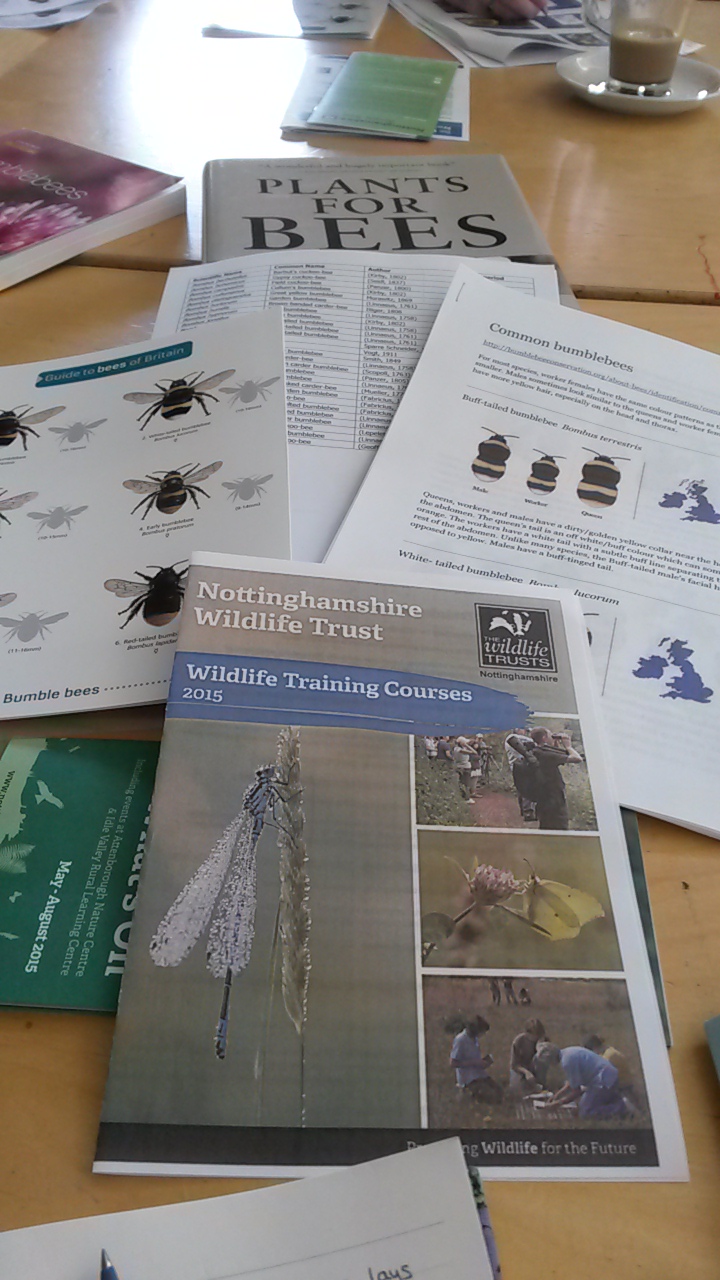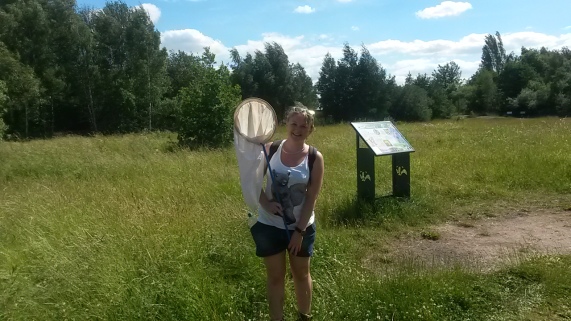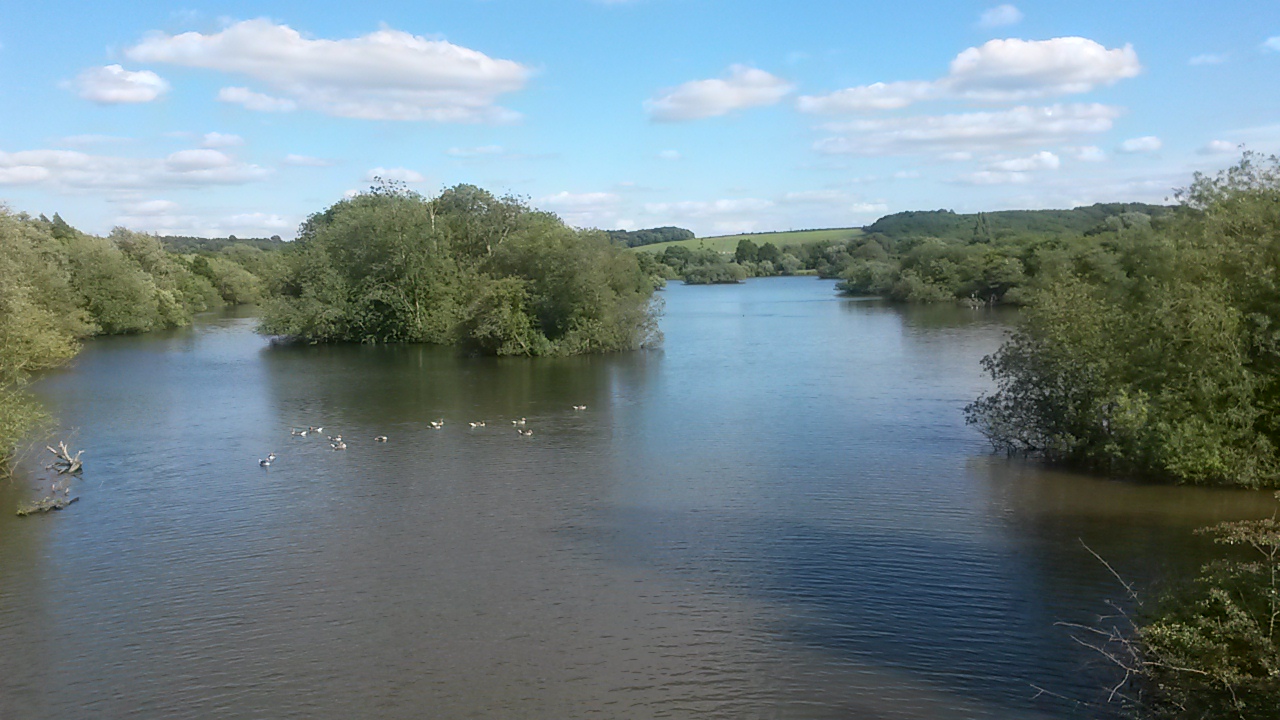It’s well into July now and I still need to edit and publish days 27-30 of my 30 Days Wild! I’ve been in the beautiful highlands of Scotland for the last week with no mobile signal or internet access so I haven’t been able to finish this as I had meant to. However, it’s better late than never and I hope you’ll stay tuned after my final 30 Days Wild post when I will be writing a mini review of my highland adventures 🙂 ![TWT_30_Days_Wild_countdown_27[1]](https://trailsntails.files.wordpress.com/2015/06/twt_30_days_wild_countdown_271.jpg?w=121&h=84) Saturday 27th June:
Saturday 27th June:
Today I was on another course at Attenborough Nature Reserve, this time learning more about bees!

Bees (you may have noticed) are one of my very favourite insects. I’m not sure what it is about them. I suppose it started with a little love for bumblebees – they’re so furry and round! The genus ‘Bombus‘ just sounds so fitting aswell. I actually became a member of the Bumblebee Conservation Trust through the ‘ice bucket challenge’ fad last summer. My dad ‘challenged’ me and although I decided not to pour freezing water over my head, I chose to donate to BBCT and became a paying member. I had been referring to their website for quite some time in my quest for bumblebee knowledge and thought it was about time I gave them something in return. With help from the amazing education membership pack and resources given to me by the trust, I began learning more about bumblebees; their ecology, conservation efforts, life cycle, identifying different types and even learning their favourite flowers! The youth leader pack I received from BBCT has been invaluable to me and also gave me the support and ideas to deliver my bumblebee Wildlife Watch session on 6th June… if you remember that long ago? Having learnt lots about bumblers (as I like to affectionately call them) through newsletters and BBCT Pollinating the Peak conference I attended this year, I turned my brain towards looking for solitary species. There are 24 species of bumblebee found in the UK (if you discount the current re-introduction project of the Short Haired Bumblebee which became extinct in 2000, and think of the three bees that make up the lucorum complex as one) so these are reasonably easy to get your head around. However, there are over 200 solitary bees found in the UK – much more of a challenge.

Our teacher for the day was David Goddard. He is county recorder for dragonflies and damselflies but has his fingers in many other pies. He taught us the correct way to net and capture a bee and then what to look for when identifying it. I learnt some new terms for the anatomy of bees – the scutellum is the posterior section of the thorax, and the collar is pretty self explanatory. These areas are key for noticing the colour of hairs and stripes when identifying bees.

In this meadow there were some beautiful butterflies – ringlets, meadow browns and common blues. Someone spotted this lovely male ghost moth Hepialus humuli – obviously not a bee but a similarly furry mini beast!

After the course I took a leisurely walk around the reserve – exploring paths that I hadn’t walked before. It was a really beautiful day – really hot and there were plenty of insects out. I saw some lovely beetles and a few caterpillars on the nettles and I took plenty of photographs before heading off to meet friends at the pub.


I’ve recently joined a couple of social media groups (UK BWARS & Insects of Britain and Northern Europe) who are fantasticin at identifying insects from photographs and all seem very experienced and helpful. It’s worth joining up if you are interested in this kind of thing – I’ve been learning a lot through them and it’s always good to practice your ID skills as there can be variations among the same species.
All images subject to copywrite. All opinions expressed on this site are my own and don’t necessarily represent the view of Nottinghamshire Wildlife Trust for whom I volunteer, or any other organisation.

Lovely post yet again. That information from your bee course looks fab!! I too have recently joined UK BWARS, They are so helpful! I look forward to reading the rest of your 30 day’s wild and of your Highland Adventure. I love Scotland and I am always trying to go back there!
LikeLike
Thank you Christine. Yeah it was a good course 🙂 reasonably priced too compared to some others. Always worth checking what your local trust has going on 🙂 Only two more drafts to edit and publish and then I’ll be writing about Scotland. It was a lovely short break.
LikeLike
Sounds like fun – and a good tip about the rolled tissue in the tube. Thanks for that! I sometimes collect insects to photograph and have terrible trouble with them galloping around inside the pot!
UK BWARS is great, isn’t it? I seem to be veering towards hoverflies as the insect I love best, but I’m still photographing bees…
LikeLike